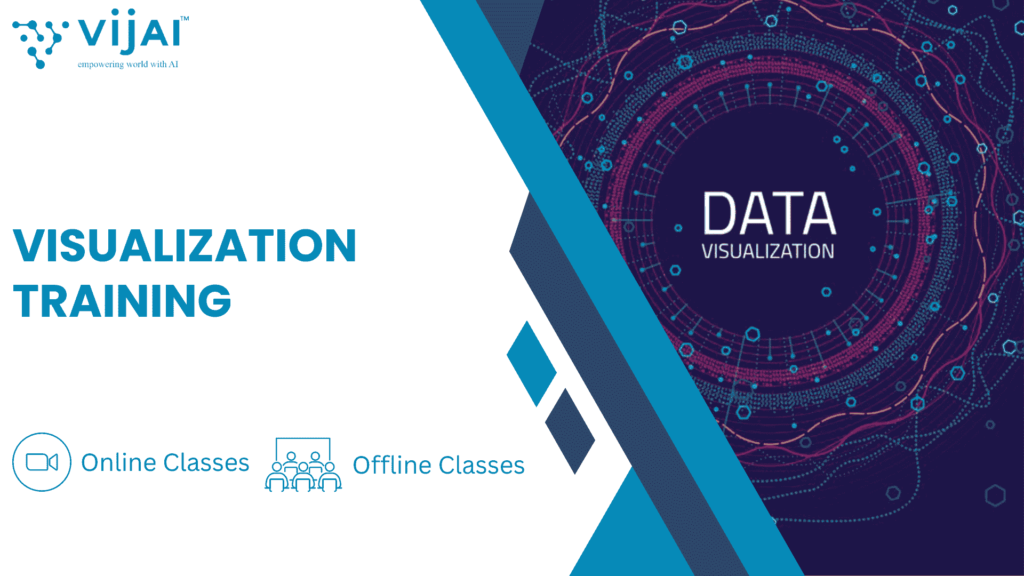- +91 9682395400
- education@vijai.info
- Chaudhary Complex, Canal Road, Mukhani, Haldwani, Uttarakhand 263139

Visualization training involves learning techniques to effectively present data visually. Participants are taught to use tools like Tableau, Power BI, or Python libraries like Matplotlib and Seaborn. The training covers principles of data visualization, including choosing appropriate chart types, color schemes, and layouts to convey insights clearly. Hands-on exercises enable learners to create compelling visualizations from raw data, emphasizing storytelling and interpretation.
Advanced topics may include interactive dashboards, geospatial visualization, and visual analytics. By mastering visualization skills, participants can communicate complex data findings efficiently, aiding decision-making and enhancing their data-driven storytelling abilities.
(4.7 reviews)
Training in visualization typically encompasses a range of exercises and techniques that aim to enhance an individual’s ability to mentally create and manipulate images, concepts, or scenarios. This skill is particularly valuable in various fields, including sports, performing arts, education, and therapy. Below is a comprehensive breakdown of visualization training:
1. Grasping the Fundamentals: Before delving into specific techniques, it is crucial to have a solid understanding of what visualization entails and how it functions. Visualization is the process of mentally constructing images or scenarios in the mind’s eye. It involves utilizing all senses to make the imagined experience as vivid and realistic as possible.
2. Establishing Objectives: Similar to any other skill, it is essential to establish clear goals for what you aim to accomplish through visualization training. Whether it is enhancing performance in a sport, fostering creativity, or alleviating anxiety, having specific objectives will serve as a guide throughout your training.
3. Relaxation Methods: Visualization tends to be most effective when the mind is relaxed and focused. Techniques such as deep breathing, progressive muscle relaxation, or mindfulness meditation can assist in calming the mind and creating an environment conducive to visualization.
4. Visualization Exercises:
a. Imagery Scripting: This involves crafting detailed scripts or narratives of specific scenarios or desired outcomes. For instance, an athlete may visualize themselves flawlessly executing their skills in a competition, envisioning every detail from the surroundings to their movements and sensations.
b. Mental Rehearsal: Similar to imagery scripting, mental rehearsal entails mentally practicing specific tasks or skills. This could encompass anything from delivering a presentation to performing a dance routine. The key is to mentally go through the motions as if you were engaging in the activity.
c. Guided Visualization: Guided visualization entails following pre-recorded or live instructions that guide you through a visualization exercise. These exercises can be focused on relaxation, self-improvement, or achieving specific goals.
Download the VijAI Robotics app now to embark on a transformative journey in Python, Machine Learning, Artificial Intelligence, Data Analytics, and Big Data.
Whether you’re an aspiring learner or a seasoned professional, this app offers comprehensive certification programs tailored to the dynamic fields of data science.
Immerse yourself in top-tier courses and stay ahead in the ever-evolving landscape of technology.

Empowering futures through cutting-edge Data Science and Machine Learning education.
Chaudhary Complex, Opposite Gokul Dham, Near Eco Town, Canal Road, Mukhani, Haldwani, Uttarakhand 263139
Phone : +91 9682395400
Copyright © 2021 VijAI Robotics All Rights Reserved

